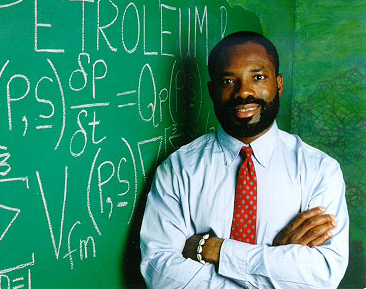Philip Emeagwali is a computer scientist who is best known for utilizing the connection machine and 65,536 microprocessors to achieve 3.1 billion calculations per second, the fastest computational record at the time.
Emeagwali was born on August 23rd, 1954 in Akure, Nigeria, to James and Agatha Emeagwali and is the oldest of their nine children. From a young age Philip Emeagwali’s father tutored him in mathematics and this cultivated his interest in the subject. In 1966, he attended a British-run Catholic elementary school in Eastern Nigeria and excelled in a number of subjects. His time there was cut short when a little over a year later the country’s civil war caused him and his family to relocate to a refugee camp. He would eventually serve as a cook in the Biafran army just prior to the war’s resolution in 1970.
Emeagwali resumed his education when he enrolled for high school at Christ the King College in Onitsha, Nigeria. He attended the school for one year before dropping out due to financial problems. Emeagwali would instead self-study and in 1973 he passed a high school equivalency test that was administered by the University of London. He then was awarded a scholarship to study at Oregon State University in Corvallis, Oregon, and he earned his bachelor of science degree in mathematics from the institution in 1977. It was here that Emeagwali’s interest in computers was sparked. He later went on to earn an M.S. in environmental engineering from Howard University in Washington, D.C. in 1981; an M.S. in ocean, coastal, and marine engineering from George Washington University in 1986; and an M.S. in mathematics from the University of Maryland in 1986.
In 1987 while working on his Ph.D. at the University of Michigan, Emeagwali was granted use of the Connection Machine located at the Los Alamos National Laboratory in New Mexico. Over the next couple of years he accessed the machine remotely from Ann Arbor, Michigan, and worked on a program to accurately assume the amount of oil in a simulated reservoir. In 1989 he ran his program and with the help of 65,536 microprocessors the machine was able to perform 1.3 billion calculations per second as well as correctly predict the amount of oil in the simulated reservoir. His work paved the way for other scientists to understand more complex functions of computers. In 1989, Emeagwali was awarded the Institute of Electronics and Electrical Engineers’ Gordon Bell Prize.
On August 15th, 1981 Emeagwali married Dale Brown with whom he would have one child with named Ijeoma.

